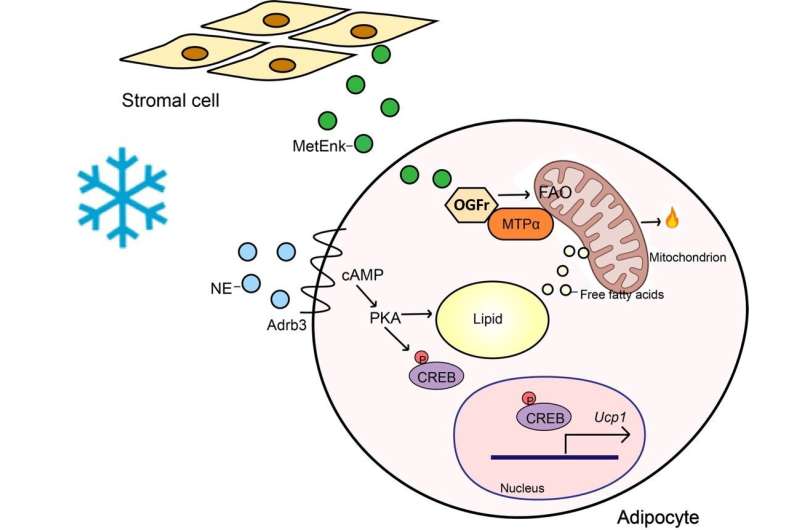This article has been reviewed according to Science X's editorial process and policies. Editors have highlighted the following attributes while ensuring the content's credibility:
fact-checked
proofread
A new player unveiled for lipid oxidation

Overweight and obesity pose significant health risks, including an increased likelihood of developing diabetes, cardiovascular disease, and cancer. Researchers are seeking practical ways to promote the oxidation of lipids, which could help balance energy storage and consumption. A recent study has identified the opioid growth factor receptor (Ogfr) gene as a promising new target for this process.
Rodents possess thermogenic fat that includes brown and beige adipocytes, which have a high capacity to uptake and utilize glucose and lipids. This promotes lipid oxidation and assists them in surviving environmental challenges such as food scarcity and cold temperatures. Studies conducted on human subjects also demonstrate that adipose tissue activities are responsive to environmental changes or diet, which suggests that they may serve as promising therapeutic targets.
The researchers found that OGFr boosts lipid oxidation and promotes heat production in fat tissues. Ogfr is highly expressed in adipocytes, and it is difficult to maintain core body temperature during exposure to cold challenges in mice with genetic Ogfr deletion in adipocytes. Furthermore, when Ogfr was ablated in adipocytes, fatty acid oxidation was reduced, glucose tolerance impaired, and tissue inflammation increased in mice with diet-induced obesity. Human adipocytes also express OGFr highly, indicating a shared mechanism.
The identification of OGFr as a crucial player for enhancing lipid oxidation provides a new avenue for addressing obesity and related afflictions. Further research on the OGFr-mediated lipid oxidation mechanism could prove helpful in developing novel therapeutic strategies for obesity and metabolic disorders. Additionally, the related functioning of OGFr in human adipocytes opens the possibility of translating these findings to clinical settings, where OGFr-based pharmacological interventions could enhance fat activities and improve metabolic health.
More information: Shan Zhang et al, Opioid growth factor receptor promotes adipose tissue thermogenesis via enhancing lipid oxidation, Life Metabolism (2023). DOI: 10.1093/lifemeta/load018




















